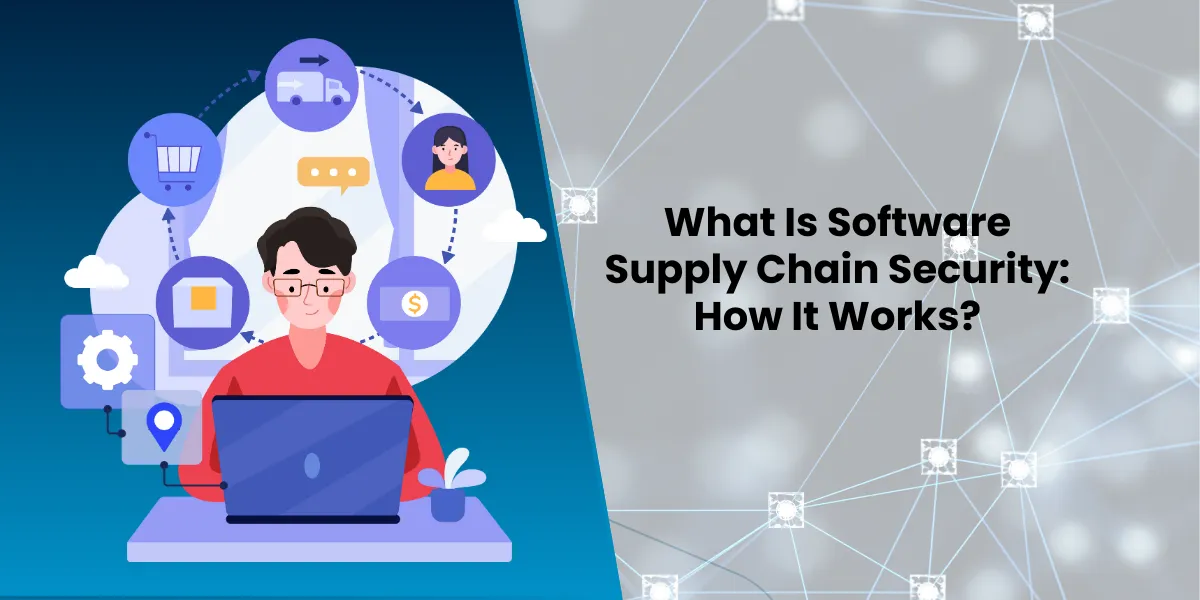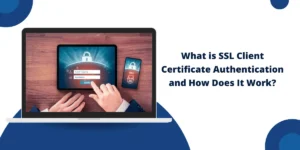What Is the Software Supply Chain?
The software supply chain refers to the linked set of processes, people, and technologies involved in designing, developing, testing, compiling, distributing, and continuously updating software applications and components.
This complex pipeline brings together the following:
- Open-source libraries and frameworks
- Proprietary and third-party code, tools, and utilities
- Development teams, processes, and pipelines
- Testing, verification, and security practices
- Distribution networks, app stores, update mechanisms
- Cloud platforms, services, and APIs
- End-user devices, applications, and runtimes
Essentially, the software supply chain enables reliable and efficient software production at scale by connecting disparate components, stakeholders, and distribution channels.
For any modern application, no single organization builds everything from scratch. Instead, they rely on integrating and distributing code and components from a global, interconnected industry.
Key Takeaways
- The software supply chain includes everything involved in developing, distributing, and updating software components.
- Attacks on the supply chain allow hackers to distribute malware or compromise apps before they reach users.
- Key risks include vulnerable open-source components, lack of visibility, and insecure development practices.
- Best practices involve securing processes, people, networks, code, and data throughout the supply chain.
- Technologies like SBOM, provenance tracking, and zero-trust can enhance supply chain security.
- Standards, frameworks, and regulations are emerging to push organizations to focus on this issue.
Why Is Software Supply Chain Security Important?
In recent years, the software supply chain has emerged as a major security concern for several reasons:
- Increasing Complexity: Modern apps contain dozens of open-source components and third-party libraries, increasing attack surfaces.
- Lack of Visibility: Organizations often need to learn exactly what code underpins their applications or where it came from.
- Accelerated Delivery: The move to DevOps and continuous delivery puts pressure on security practices in the rush to release software faster.
- Widened Access: Applications and components are accessed by a diverse global audience, making the impact of supply chain attacks much broader.
- Rise of State-Sponsored Attacks: Nation-states increasingly target the software supply chain to conduct espionage or sabotage critical infrastructure.
- Increasing Regulatory Pressure: Governments and industry groups are imposing standards and compliance around software supply chain security.
- Cost of Breaches: A single vulnerable component can corrupt thousands of downstream applications, greatly expanding the costs of a breach.
Main Risks and Threats
The nature of the modern software supply chain introduces multiple risks and threat vectors that organizations need to address:
Vulnerable Open Source Components
Most applications contain dozens of open-source libraries and components from sources like npm, NuGet, Maven, etc. These introduce risks:
- Unpatched vulnerabilities: openly disclosed flaws in commonly used open-source libs
- Backdoor malware: developers intentionally compromise their public libraries
- License conflicts: using open-source code in unpermitted ways
Lack of Visibility and Control
Complex, dynamic supply chains make it hard to track all components and dependencies. This leads to:
- Unknown risks: failure to identify all third-party code included
- Unmanaged changes: inability to spot vulnerable component updates
- No integrity checks: lack of code signing or provenance tracking
Insecure Development Practices
Immature software development and delivery processes also pose threats:
- Rushed processes: focus on speed over security
- Poor testing: inadequate static, dynamic, and open-source analysis
- Weak change control: uncontrolled updates to internal and external dependencies
- Misconfiguration: insecure settings, network rules, and access controls
Counterfeit or Tampered Artifacts
Distribution channels like code repositories and app stores can also be compromised:
- Poisoned repositories: inserting altered libraries or tools
- Hijacked updates: backdoored versions auto-downloaded after release
- App store malware: fake or tampered apps in official markets
- Certificate fraud: signed executables from stolen keys or spoofed identities
Infrastructure and Service Risks
Cloud, tools, and automation also expand the supply chain attack surface:
- Cloud credentials: leaked keys allowing access to CI/CD pipelines, code repos, etc.
- Container escapes: breaking out of sandboxes into hosted environments
- Infrastructure attacks: hijacking the networks, systems, and tools used to build, test, and distribute software
- API compromises: manipulating interfaces to inject flaws or steal data
This list highlights the complexity organizations face in securing modern software delivery ecosystems.
Best Practices for Securing the Software Supply Chain
Protecting the software supply chain requires a broad approach, given its expansive nature and many intersecting components.
Build a Software Bill of Materials (SBOM)
An SBOM provides a complete, up-to-date inventory of all components (open source, third party, in-house) within an application or system, giving visibility into potential risks.
SBOMs should cover:
- Component names, versions, licenses
- Build info, dependencies, ancestor relationships
- Authors, published dates, download sites
- Hashes, certificates, and metadata to validate integrity
Adopt DevSecOps Practices
Integrating security into DevOps culture, processes, and tools is key. This means:
- Secure code repositories: Control access, encrypt data, enable signatures
- Scan early, scan often: Static, SCA, SAST, DAST across the pipeline
- Policy as code: Programmatically enforce security in delivery pipelines
- Fix or fail fast: Stop releases with issues before they get deployed
- Immutable infrastructure: Prevent unapproved changes in all environments
- Security champions: Make AppSec experts available to developers
Institute Stronger Change Control
Manage changes to dependencies and configurations:
- Lockdown versions: Freeze dependency versions, avoid auto-updates
- Monitor ecosystems: Watch for new vulnerabilities, expired certs, etc.
- Review requests: Scrutinize proposed component upgrades or changes
- Test rigorously: Confirm no regressions from any updates
- Fail safely: Use circuit breakers if dependencies go down
Adopt a Zero Trust Model
Zero trust security involves never trusting any entity by default. This means:
- Strict access controls: Least privilege for people, processes, infrastructure
- Continuous authorization: Revalidate access frequently based on context
- Encrypt everything: Data at rest, data in motion, keys, credentials
- Segment environments: Isolate dev, test, production, and publicly exposed assets
Validate Integrity Throughout the Lifecycle
Actively detect tampering or counterfeits:
- Fingerprint components: Hash binaries, files, packages, and dependencies
- Require signatures: Use trusted public keys to verify software provenance
- Runtime attestation: Confirm host state and configurations pre-execution
- Monitor for anomalies: Detect unexpected changes in pipelines, scripts, dependencies, etc.
Embrace Security Across Culture and Organization
- Secure by design: Make AppSec intrinsic to development workflows
- Train everyone: Educate all staff on supply chain risks
- Create transparency: Provide visibility to engender trust
- Encourage disclosure: Reward reporting of potential issues or risks
- Build relationships: Collaborate closely with vendors and partners
Key Technologies and Standards
Various technologies and standards help implement software supply chain security in practice:
Software Bill of Materials (SBOM)
As noted above, an SBOM provides a machine-readable inventory of components and dependencies. Initiatives like SPDX provide standards for SBOM generation, consumption, and exchange.
Software Provenance Tracking
Provenance systems use signatures, logs, and ledgers to provide tamper evidence and track the origin, ownership, and history of software components and artifacts.
DevSecOps Tools
CI/CD tools like GitHub Actions, Jenkins, TravisCI, etc., can automate security checks and policy enforcement within the development pipeline.
Binary Code Scanning
SAST, DAST, and SCA tools analyze source code, executables, scripts, and dependencies to identify vulnerabilities, malware, misconfigurations, and non-compliances.
Runtime Application Self Protection (RASP)
RASP detects and blocks attacks targeting running applications by adding instrumentation into production environments.
Infrastructure as Code
Declarative definition of infrastructure, configurations, and policies via code enhances consistency, repeatability, and security of deployment pipelines.
Zero Trust Architectures
Zero-trust network access, credential management, micro-segmentation, and other concepts improve security in complex, cloud-native development environments.
Supply Chain Levels for Software Artifacts (SLSA)
An emerging framework from Google for end-to-end integrity and provenance tracking of software artifacts throughout the delivery pipeline.
Emerging Regulations and Compliance Standards
Various government policies, regulations, and industry frameworks now mandate or promote SBOM generation, vulnerability disclosure, and other software supply chain practices, including:
- US Executive Order 14028 on Cybersecurity
- NIST 800-218 Securing Software Supply Chains Guide
- EU Cybersecurity Act
- ISO 27034 Application Security Management Standard
- CISQ Software Supply Chain Security Framework
- Automotive Cybersecurity Best Practices
- Medical Device Cybersecurity Guidelines
As threats grow, regulators hope these spotlight the issue and provide impetus and guidance to improve security across interconnected software ecosystems.
Final Thoughts
Securing the modern software supply chain requires end-to-end visibility, integrity, and security across a web of people, processes, and technology. Organizations need to mitigate risks introduced through development workflows, open-source usage, distribution channels, and infrastructure.
Implementing robust controls, following emerging standards, utilizing proven technologies like SBOMs and zero trust, and embedding security deeply into culture and practice are essential steps toward managing this crucial challenge.
Frequently Asked Questions About Code Signing SDLC
How do you audit a software supply chain?
Conduct risk assessments of all processes, map data flows, review controls, scan components, validate the integrity of artifacts, and interview stakeholders to identify gaps.
What are the consequences of a software supply chain attack?
Mass exploitation, business disruption, regulatory non-compliance, intellectual property theft, loss of customer trust, and severe financial costs.
How can you prevent software supply chain attacks?
Reduce attack surfaces, increase visibility, adopt zero trust controls, securely develop and distribute software, and constantly monitor for threats across the entire pipeline.
What does a secure software development lifecycle (SDLC) involve?
Security requirements, risk analysis, static scanning, secure code reviews, penetration testing, remediation tracking, and ongoing vulnerability monitoring throughout development and post-release.
How do you perform a software supply chain risk assessment?
Map assets, document flows of code and data, identify risks like unchecked dependencies and insecure processes, classify risk scenarios, and quantify potential impacts.
What are the best DevSecOps tools?
SAST, DAST, SCA, secret scanning, policy enforcement, artifact signing, provenance tracking, container scanning, cloud security posture management, and more.

Priya Mervana
 Verified Web Security Experts
Verified Web Security Experts
Priya Mervana is working at SSLInsights.com as a web security expert with over 10 years of experience writing about encryption, SSL certificates, and online privacy. She aims to make complex security topics easily understandable for everyday internet users.



